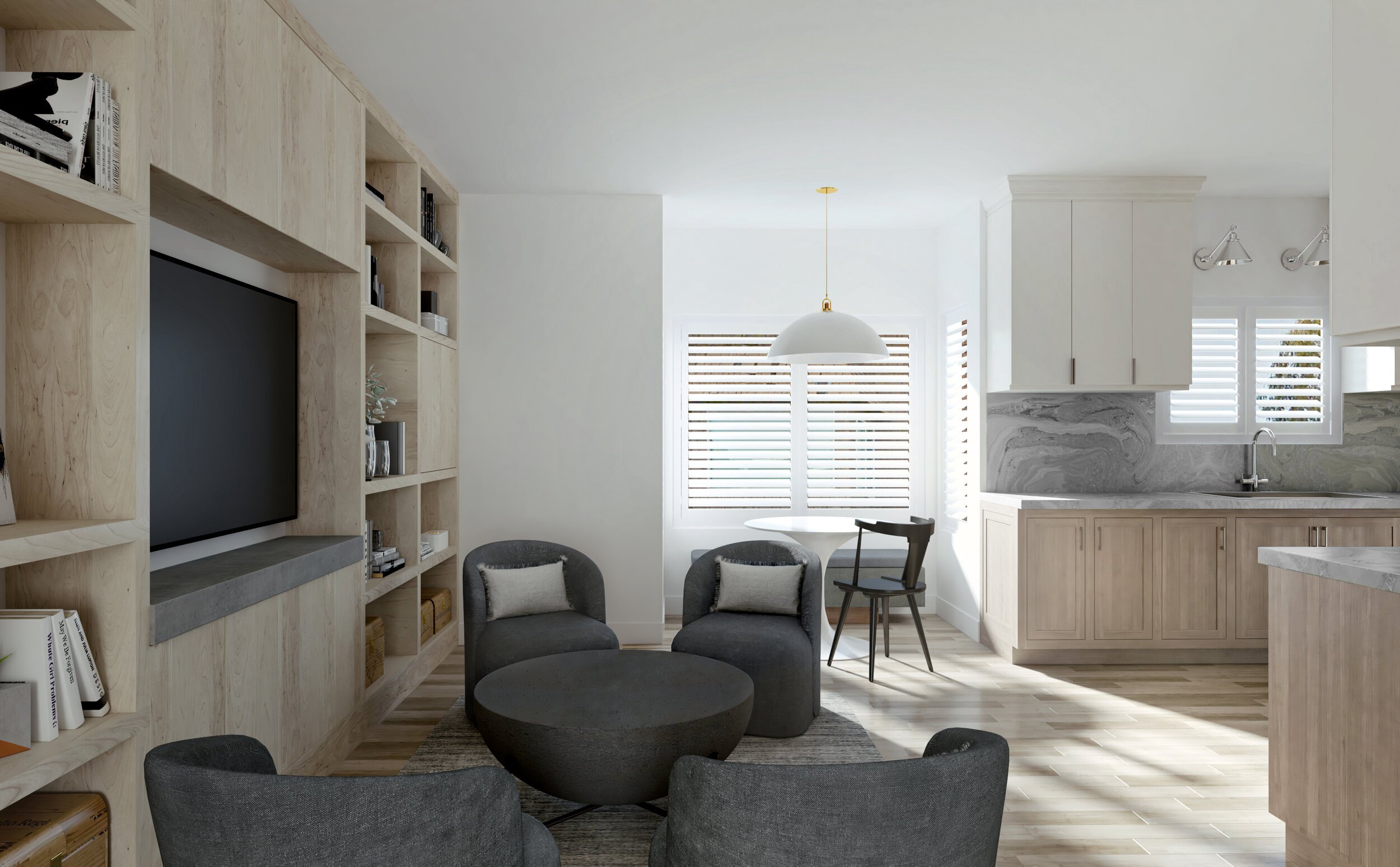Why Your Home Feels Off (And How to Fix It)
Ever walked into a home and felt immediately at ease, like everything just fits? Now, compare that to a home that feels unfinished, disconnected, or just off, even after investing in beautiful furniture and accessories.
What’s the difference?
It’s not just the furniture. It’s not just the color scheme.
It’s the flow, the way every element of your home works together to create balance, warmth, and purpose.
As a designer, I’ve walked into many beautifully homes that still felt… off. The furniture was new, the finishes had character, and the layout was open and airy. But something was still missing...
A few years ago, I walked into a client’s newly renovated home. It had all the right pieces, pretty materials, new furniture, a the open floor plan. By all standards, it should have felt perfect.
But instead, it felt cold and disconnected.
The problem?
The space was beautiful but not intentional, there was no flow, no warmth, no connection between the rooms. It looked like a staged house, not a home.
Even the new spaces can feel off if they don’t have the right balance of design, function, and feeling.
Luckily, fixing this isn’t about adding more expensive pieces, it’s about making small, intentional changes that bring warmth, balance, and cohesion.
Here’s how you can transform your space from styled and staged to effortlessly inviting.
1. Your Home Lacks a Unified Design Story
One of the biggest mistakes I see is rooms that don’t feel connected. If every space has a different style, color palette, or mood, your home can feel disjointed instead of cohesive.
✅ What to Do: ✔️ Stick to a consistent color palette throughout your home. ✔️ Repeat materials, finishes, and textures to create flow. ✔️ Introduce a design element (a specific wood tone, metal finish, or textile) that ties everything together.
🚫 What to Avoid: ❌ Drastically different styles from room to room. ❌ Clashing color schemes that disrupt the visual flow.
💡 Pro Tip: A home doesn’t have to be matchy-matchy, but it should have a consistent design language that makes each space feel connected.
Paulina Carcach Studio
2. The Lighting Isn’t Layered Properly
Lighting is one of the most overlooked aspects of design, yet it has the biggest impact on how a space feels. Relying only on overhead lighting can make a home feel flat and uninviting.
✅ What to Do: ✔️ Layer lighting with a mix of ambient (overhead), task (lamps), and accent (sconces, candles, LED strips). ✔️ Use warm white bulbs (2700K–3000K) for a cozy glow. ✔️ Install dimmers to control brightness and create mood.
🚫 What to Avoid: ❌ Using only recessed ceiling lights—layering is key! ❌ Mixing different light temperatures—stick to one tone throughout your home.
💡 Pro Tip: If your space feels cold or harsh, swap bright white bulbs for warmer tones, it makes an immediate difference!
Theboundry
3. Your Furniture Placement Isn’t Encouraging Connection
A home should be designed for living, not just for looking good. If your furniture isn’t arranged with intention, your space might feel disconnected or awkward.
✅ What to Do: ✔️ Float furniture away from walls to create inviting conversation areas. ✔️ Anchor seating with a properly sized rug (all front legs AND back legs of furniture should sit on it). ✔️ Make sure every seat has a surface nearby (side tables, coffee tables).
🚫 What to Avoid: ❌ Pushing all furniture against the walls; it creates a disconnected, empty feel. ❌ Overcrowding a space, negative space is just as important as furniture.
💡 Pro Tip: Rounded furniture pieces, like a curved sofa or circular coffee table, can soften the sharp angles of a modern home and improve flow.
Paulina Carcach Studio
4. The Space Feels Too Cold or Too Cluttered
There’s a fine line between minimalist and sterile, or between curated and cluttered. The key to balance? Intentional layering.
✅ What to Do: ✔️ Add textural contrast with rugs, woven fabrics, and natural materials. ✔️ Mix open and closed storage, keep everyday items accessible but clutter hidden. ✔️ Use art, books, and personal items to make the space feel lived-in.
🚫 What to Avoid: ❌ Overloading surfaces with small décor, bigger, statement pieces work better. ❌ Choosing all hard, sleek materials, they reflect sound and can make spaces feel echoey.
💡 Pro Tip: Window draperies in wool or a fabric that hangs nicely instantly soften walls and absorb sound, reducing echoes in modern homes.
Theboundry
5. Your Home Doesn’t Reflect How You Actually Live
A beautiful home is meaningless if it doesn’t work for your lifestyle. If your space isn’t designed around your daily habits, it will never feel truly functional.
✅ What to Do: ✔️ Choose materials that match your lifestyle (durable fabrics for kids & pets). ✔️ Design storage around how you actually use your space. ✔️ Make sure lighting, seating, and layout support your daily routines.
🚫 What to Avoid: ❌ Copying a Pinterest-perfect home that doesn’t match your real needs. ❌ Prioritizing aesthetics over livability, your home should work for you.
💡 Pro Tip: Pay attention to where clutter naturally gathers, that’s a sign you need better storage solutions in that area.
Theboundry
A well-designed home isn’t just about trendy furniture or beautiful finishes, it’s about creating a space that feels effortless, balanced, and uniquely yours.
If your home feels off, chances are it’s missing cohesion, flow, or a connection to how you actually live. But small, intentional changes can make a massive difference.
💬 Which of these changes would you try in your home? Let’s discuss in the comments!
xx Paulina





